Heritage brands often walk a tightrope: lean too hard on the past and risk irrelevance; chase trends and lose their soul. Sunspel, the 164-year-old British label best known for refining the humble T-shirt, has found a third path—one that’s quietly rewriting how legacy can incubate what comes next.
Since its 2005 reinvention under Nicholas Brooke, Sunspel has served as an unlikely R&D lab for emerging designers. The brand has worked with the likes of Jonathan Anderson, Christophe Lemaire, Studio Nicholson, and Jun Takahashi—often not when they were household names, but just before their respective ascents. These weren’t hype-fueled drops or one-off stunts. They were slow, intentional collaborations, structured around form, fit, and philosophy.
What emerged is a strategic model worth unpacking: a heritage brand as both technical anchor and cultural antenna.
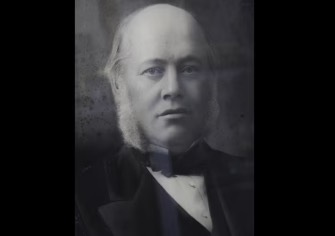


Jonathan Anderson (2009–2014): A Creative Renovation of Classics
Jonathan Anderson was still early in his career when he joined Sunspel as creative director in 2009. Prior to founding his eponymous label J.W. Anderson, he worked in visual merchandising at Prada, where his conceptual instincts were already beginning to take shape. At Sunspel, he took archival cuts and rebuilt them for a new generation—introducing modern loopback sweatshirts and a reworked Riviera Polo, while expanding into womenswear with tactile, oversized silhouettes. He also experimented with proportions and fabrics in subtle but impactful ways, pushing the brand's boundaries without straying from its DNA. The collaboration added editorial edge to Sunspel’s profile, helping to attract a younger, more design-conscious audience. For Anderson, Sunspel served as a rigorous design lab—a place where he could hone his skills in restraint and material sensitivity, ultimately informing the craftsmanship that would define his later work at Loewe and now at Dior.

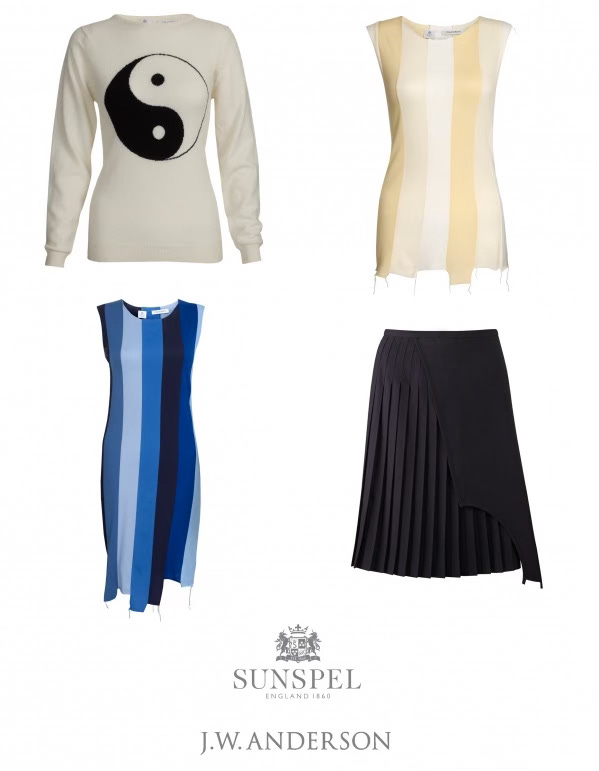
Lemaire (2019): Minimalism Meets Modern Leisure
Christophe Lemaire was already a respected name in minimalist design, with stints at Lacoste and Hermès under his belt. His work is defined by architectural purity, monochromatic palettes, and a steadfast refusal of flash. For Sunspel, he designed two key capsules in 2019—one for spring/summer, the other for autumn/winter—that reimagined everyday leisurewear with a sense of meditative precision. Pajama shirts, elastic-waist trousers, and featherweight knits brought a breezy Riviera mood grounded in serious craftsmanship. Lemaire's touch lent an elegant restraint to the collection, emphasizing comfort without sacrificing structure. The partnership helped extend Sunspel’s product language into a new register of casual sophistication, doing so without compromising its identity.
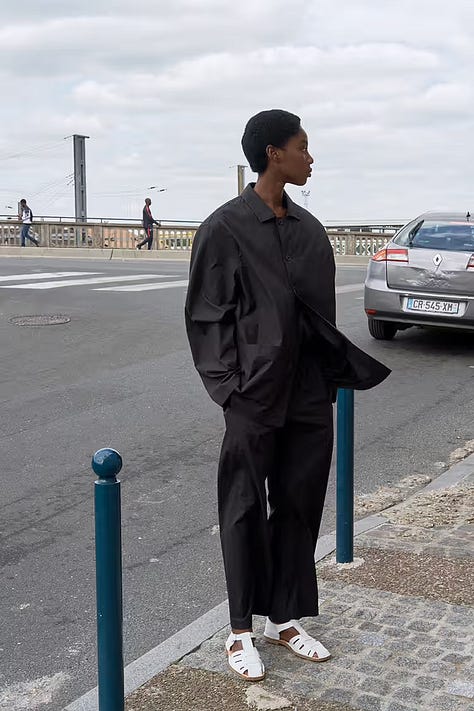
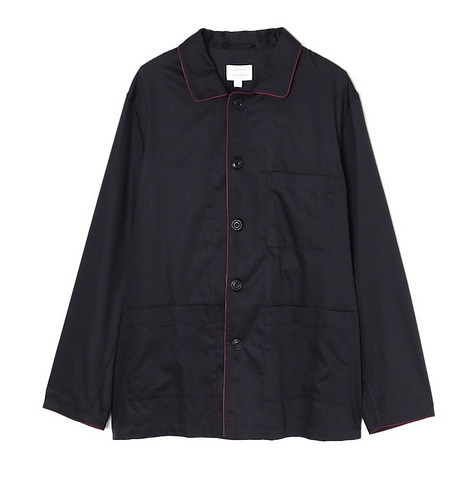
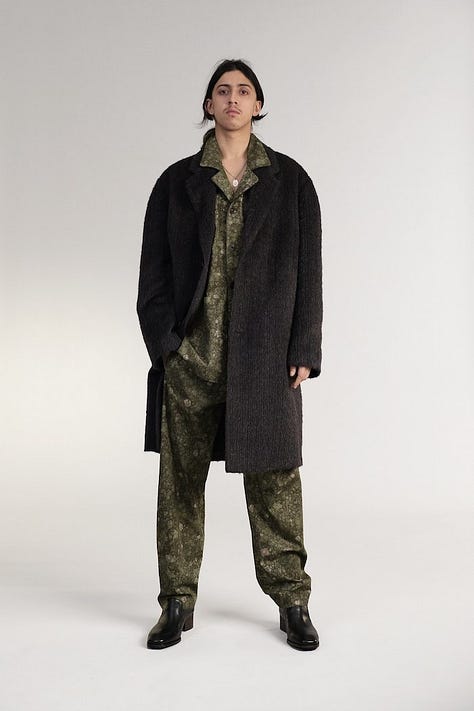
Studio Nicholson (2021): Modular Essentials with a Japanese Edge
Studio Nicholson, founded in 2010 by Nick Wakeman, has built a cult following for its modular approach to dressing. With a philosophy rooted in architecture and Japanese design principles, the brand favors functional, genderless pieces in muted tones that lend themselves to layering and interchangeability. Their 2021 collaboration with Sunspel, dubbed the "kit of parts," introduced a capsule of streamlined, seasonless garments—funnel-neck zip tops, oversized tees, and tailored joggers. The silhouettes emphasized comfort without losing structure, and the palette underscored the collection's versatility. The result was a considered fusion of technical expertise and conceptual form, offering wardrobe solutions that felt both utilitarian and elevated.

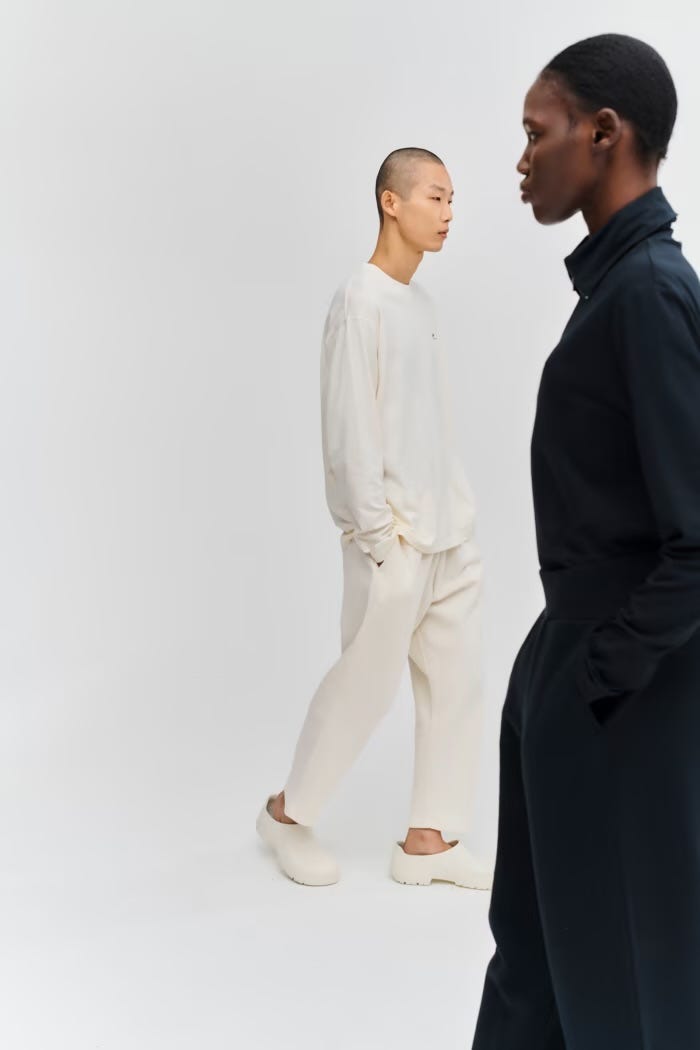
Jun Takahashi (2025): Avant-Garde Calm with The Shepherd UNDERCOVER
Known for his boundary-pushing brand UNDERCOVER, founded in 1990 in Tokyo, Jun Takahashi has long been a central figure in Japan's avant-garde fashion scene. UNDERCOVER is renowned for blending punk aesthetics with poetic surrealism, often weaving in sociopolitical themes. In contrast, Takahashi launched The Shepherd as a quieter, more introspective line—one that channels minimalism through a poetic, almost pastoral lens. In May 2025, The Shepherd x Sunspel capsule distilled Takahashi’s subversive calm into three key pieces: a heavyweight tee, pajama shirt, and matching trousers. Finished with zigzag topstitching, satin-lined collars, and embroidered symbols, the collection was a gentle exercise in avant-garde restraint—proof that Sunspel could host conceptual design without losing its core.
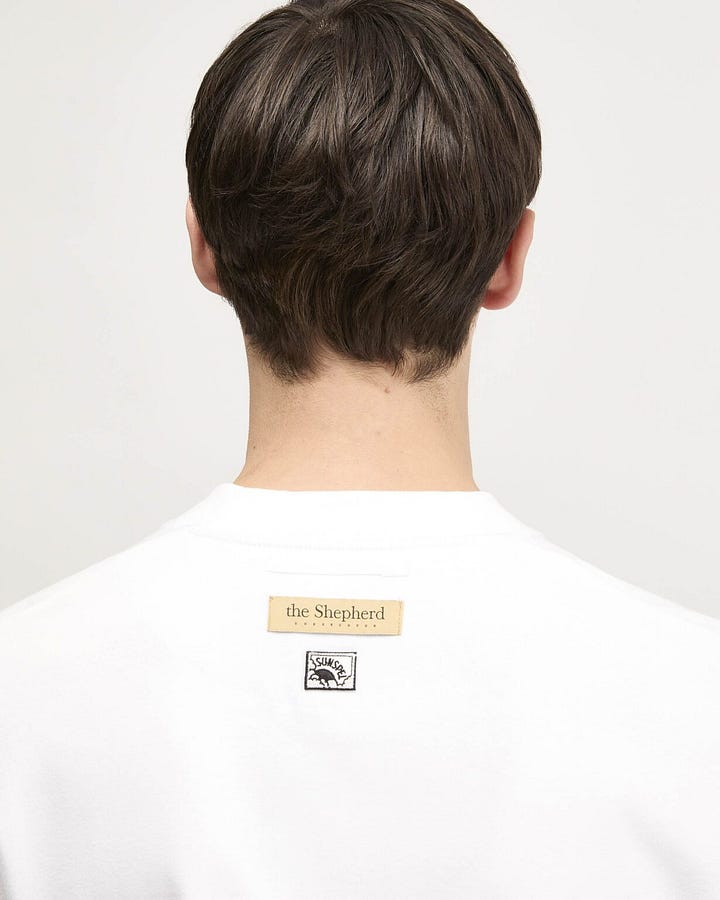

Strategic Insights: A Blueprint for Taste-Led Collaboration
What makes Sunspel’s collaboration model distinct is its long-term, quietly ambitious structure. This isn’t about leveraging hype cycles or latching onto celebrity names. Instead, the brand functions as a design sandbox—a space where “emerging” talents gain access to Sunspel’s extensive archive, British textile expertise, and vertically integrated production system. Freed from the usual constraints of marketing metrics or seasonal pressures, designers are invited to reinterpret heritage staples with complete technical backing.
In return, Sunspel earns cultural relevance without resorting to flashy pivots. The collaborations expand its visual vocabulary while maintaining integrity. For many designers, working with Sunspel is less about revenue and more about developing discipline: learning to work within tight brand codes, mastering proportion, and gaining fluency in fabric construction. Each project reinforces Sunspel as a host brand—one that elevates both parties through mutual respect and craft.
Macro Alignment: Why This Matters Now
Sunspel’s approach lands at a moment of quiet recalibration in the fashion industry. While “quiet luxury” has become a catch-all phrase, the deeper shift is toward brands that can substantiate their minimalism with craft. In this context, Sunspel’s DNA—refined basics, impeccable materials, minimal logos—feels less like an aesthetic and more like a long-term value proposition.
At the same time, designers themselves are shifting gears. After years of burnout from award circuits, fashion weeks, and hyper-visible drops, there’s renewed interest in "discipline over drama." Collaborating with Sunspel isn’t just a résumé boost—it’s a masterclass in restraint, proportion, and technical fluency. This makes the brand less a launchpad and more a proving ground.
But this model has its trade-offs. Its patience, its lack of spectacle, and its aversion to trend-chasing naturally slow brand awareness. Sunspel isn’t built for scale—it’s built for longevity. In an age where fashion favors fast feedback loops, that can make it seem quiet to the point of invisible. And yet, it persists.
Conclusion: Taste as Infrastructure
Sunspel’s power lies in its paradox: a heritage brand that resists nostalgia, a quiet collaborator that shapes bold design voices. It doesn’t scream for relevance—it earns it through trust, rigor, and long-tail cultural capital. And crucially, it seems to know its role. Sunspel doesn’t chase hype because it doesn’t need to. Its influence is clearest in retrospect, once a designer has ascended and you realize: that silhouette, that fabric discipline, that quiet confidence—it started here.
For other legacy brands wondering how to stay relevant without selling out, the answer might not lie in louder campaigns or faster capsules. It might lie in hosting the next generation—then stepping back and letting the work speak.



